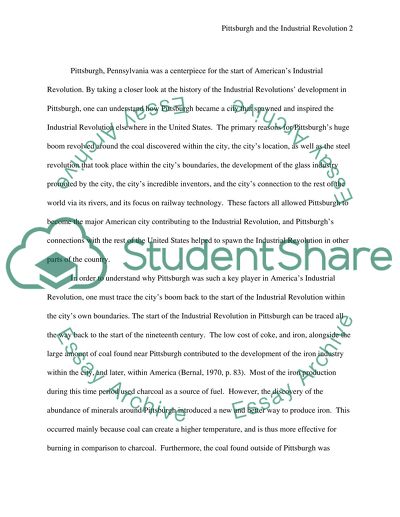Cite this document
(American Industrial Revolution in Pittsburgh Essay Example | Topics and Well Written Essays - 1750 words, n.d.)
American Industrial Revolution in Pittsburgh Essay Example | Topics and Well Written Essays - 1750 words. https://studentshare.org/history/1527012-american-industrial-revolution-pittsburgh-pennsylvania
American Industrial Revolution in Pittsburgh Essay Example | Topics and Well Written Essays - 1750 words. https://studentshare.org/history/1527012-american-industrial-revolution-pittsburgh-pennsylvania
(American Industrial Revolution in Pittsburgh Essay Example | Topics and Well Written Essays - 1750 Words)
American Industrial Revolution in Pittsburgh Essay Example | Topics and Well Written Essays - 1750 Words. https://studentshare.org/history/1527012-american-industrial-revolution-pittsburgh-pennsylvania.
American Industrial Revolution in Pittsburgh Essay Example | Topics and Well Written Essays - 1750 Words. https://studentshare.org/history/1527012-american-industrial-revolution-pittsburgh-pennsylvania.
“American Industrial Revolution in Pittsburgh Essay Example | Topics and Well Written Essays - 1750 Words”. https://studentshare.org/history/1527012-american-industrial-revolution-pittsburgh-pennsylvania.


